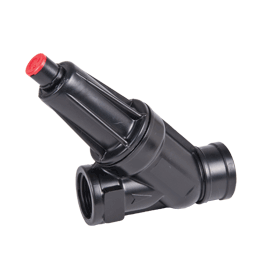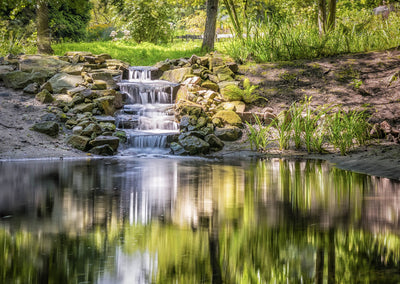How to Grow Air Plants
Air plants, also known as Tillandsia, are members of the bromeliad family and are native to South America, Central America, the West Indies and the southern United States. These amazing plants have the ability to absorb moisture and nutrients through tiny scales on their leaves instead of roots, making them ideal for small space living and low-maintenance gardening.
Most air plants thrive in warm weather and bright light, but can also survive in dry climates. However, it is important to ensure that air plants receive enough light, as they require good air circulation and humidity to grow properly.
When it comes to watering air plants, it is best to use room-temperature water, distilled water or even softened water. Tap water can be used, but make sure to let it sit for 24 hours before using it to allow the chlorine to evaporate. The best way to water air plants is to soak them in water for about 20 minutes, then shake off any excess water and allow them to dry completely before placing them back in their containers. Some info to add about these plants is that if you live in a humid climate once you get the plants going they will need very little misting. I live in a desert climate where the humidity is low so I need to mist near the plan a few times per week. please note that the fuzzy types prefer no mist.
It is also possible to humidify air plants regularly, especially in hot weather, as this helps to increase humidity levels and prevent the plants from drying out. A spray bottle can be used for this purpose if needed but a humidifier is best.
- Tillandsia cyanea - commonly known as pink quill, it has bright pink bracts and blue-purple flowers
- Tillandsia brachycaulos - has rosy-pink bracts and bright purple flowers
- Tillandsia xerographica - has yellowish-white bracts and small pink to purple flowers
- Tillandsia ionantha - has rosy-red bracts and small violet flowers
- Tillandsia caput-medusae - has yellow-green bracts and purple flowers
- Tillandsia streptophylla - has red bracts and blue flowers.
- Tillandsia usneoides - Spanish Moss is just plain cool!
Note: Air Plants are known for their unique and striking blooms, which can last for several weeks. There are hundreds of species of Air plants that live in the Central Americas, some are small air plants and some are large but they all need a good mist every day or two. Growing air plants in direct sunlight is almost a necessity. Growing air plants requires bright light and good humidity. So place your air plant in bright, indirect light or near a west-facing window and mist as needed in dry climates. Keep in mind that these plants prefer minimum temperatures of 60 deg F or 15 deg C.

There are several varieties of air plants, each with different needs. However, as a general rule, air plants should be fertilized every four weeks using a bromeliad or Tillandsia fertilizer. There are types of bromeliad fertilizer available at your local garden centers. Distilled water or rainwater can be used for misting the plants and should be used for mixing the fertilizer.
For those with a green thumb, air plants can be grown in orchid soil or even attached to rocks, trees twisted branches or other plants such as any tropical tree with woody stems. I like to find driftwood with unique character and use a hot glue gun to attach these plants to create a free-standing sculpture or a hanging display of these beautiful air plants. The tiny types of these plants can also be grown in glass globes, baubles or terrariums, which not only provide enough light and humidity but also allow for the plant to absorb water and nutrients.
In terms of propagation, air plants can be propagated by division of the mother plant or by seed. Seeding takes years and years for them to grow so it is not recommended. However, it is important to note that air plants eventually die after they bloom, but they will produce offsets or "pups" from the mother plant before they die, which can be separated and grown into new air plants.

Tillandsia, or air plants, are epiphytic plants that are native to the Americas and are known for their unique adaptations for survival in arid environments. Instead of relying on soil for water and nutrients, they absorb moisture and nutrients through specialized structures on their leaves.
While misting can help provide moisture for some species of Tillandsia, some species such as Tillandsia stricta, Tillandsia ionantha, and Tillandsia xerographica, prefer to absorb moisture from the air through their leaves and can be easily damaged by excess moisture. Over-watering these species can cause root rot, which can lead to the death of the plant. This, of course, needs to be taken with a common sense approach as I once had someone say that if Tillandsia plants get too wet they would die and I responded 'hmmm I wonder what happens when it rains for a few weeks in the wild? do you think all the Tillandsias die? hmm'
Therefore, it is important to understand the specific needs of each species of Tillandsia to ensure their proper care and survival. If you have a Tillandsia species that doesn't like to be misted, it's best to provide indirect moisture by placing the plant in a humid environment or by gently misting it with a spray bottle a few times a week.
In conclusion, air plants are amazing plants that are ideal for small-space living and low-maintenance gardening. With proper care and attention, air plants can thrive, bloom and provide a beautiful addition to any home or garden. These incredible plants can thrive in direct sun, live in a jar or glass baubles, they can even survive being glued to an old branch! So it is a good plant for anyone to experiment with and a great addition to any plant collection. I hope that this information will give adequate information on how to grow air plants.






